William Morris
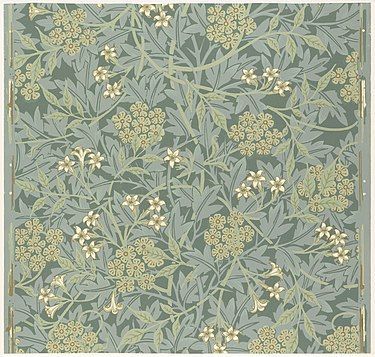

I’m starting with a couple of images today because even if you haven’t heard of William Morris you will have seen some of his designs as his work had a major influence on interior decorations, fabrics and the fashion scene. Importantly, the work of William Morris embodies so much of the fundamental principles of design that still apply today - geometric order, nature, patterns, colour, and visual appeal.
William Morris (1834-1896) was an English textile designer who believed people should be surrounded by beautiful objects. He designed wallpapers, carpets, embroideries, tapestries, tiles and book covers.
In June 1852 Morris entered Exeter College at Oxford University, and in his first year, he met Edward Burne-Jones who became a lifelong friend and collaborator. They both had an interst in medieval art and the chivalry of the times.
Edward Burne-Jones became one of England most famous painters of the 1800s and he introduced Morris to The Pre-Raphaelite Brotherhood who were making a major contribution to the English art world. He encouraged Morris to see an alternative to the dehumanised objects being produced by machines in the ever-growing era of industrialisation.1
You can see the romantic Pre-Raphaelite influence in this tapestry by Morris.

When William Morris left university in 1856 with his degree, he was initially apprenticed to an architectural firm in Oxford. His job was architectural drawing, where he was supervised by one of the young architects, Philip Webb, who also became a lifelong friend. Later, after Morris married, he and Philip Webb co-designed and built a house for him, 10 miles out of central London, which became known as Red House (a Palace of Art).1
Morris found it difficult to find furnishings for Red House so he decided to create them himself. To do this he founded 'the Firm', which later became Morris and Company, to create wallpaper, stained glass, furniture, and textiles to his own designs. Along with another friend, Dante Gabriel Rossetti, he and Burne-Jones also painted murals on the walls.
After all that work, Morris only lived there for 5 years, but The Red House is still maintained, and is able to still be visited today, with many of the tapestries, wall hangings, stained glass windows and furntiture still in place there.
If you would like to read more about the history of the Red House, please click here and here.


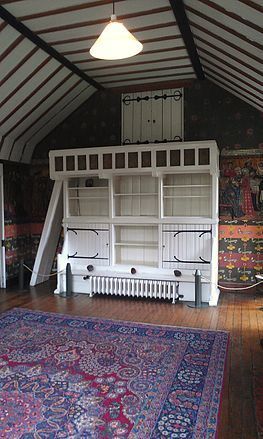
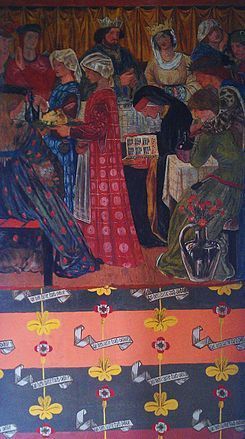



Morris was a major player in the British Arts and Craft Movement fighting the changes taking place in design caused by the mechanisation of the western world. Morris stood for the preservation of traditional craftsmanship which stresses the inherent beauty of the material, the importance of nature as inspiration, and the value of simplicity, utility, and beauty.2
The movement stood for traditional craftsmanship using simple forms, and often used medieval, romantic, or folk styles of decoration. It was more than an arts movement as it was advocating economic and social reform, being essentially anti-industrial.
During his career, William Morris produced over 50 wallpapers. These designs – many of which feature in the Victoria & Albert Museum's extensive Morris collection – adopted a naturalistic and very British take on pattern that was both new and quietly radical.


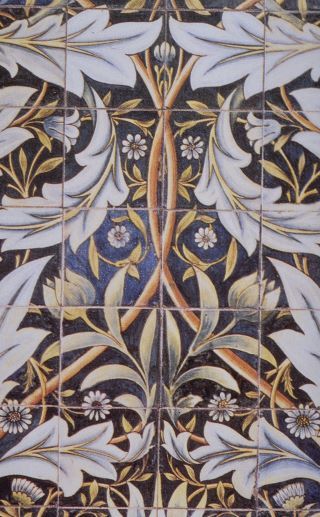

William Morris was also a poet, novelist, translator, and socialist activist. The illustrations in his fantasy novel The Wood Beyond the World emphasise the influence of the Pre-Raphaelite movement.
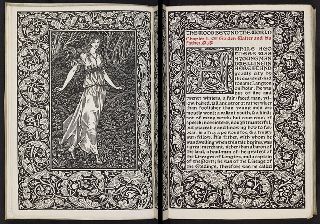
I love the tiles William Morris also designed so our last image for this post on this amazing artist here is an example.

There is so much to know about William Morris, more than we can possibly include here. There are many wonderful books which showcase his life, philosophies and prolific designs, such as this beautiful book, below, by Linda Parry.
Alternatively, if you would like to read more about his life and the incredible diversity of his achievements, please click here.

Tomorrow we will learn about Jane Morris (née Burden, 1839– 1914). Her delicate features made her the embodiment of Pre-Raphaelite beauty, and she was a model for many English artists. She was also muse to both William Morris and Dante Gabriel Rossetti, (and later William Morris' wife). But she was so much more...... a talented artist and embroiderer in her own right.
In an upcoming post, we will also look at their very talented daughter, Mary "May" Morris.
A large slice of artistic ability is definitely inherited!
Footnotes
- With thanks to Wikipedia
- With thanks to britainexpress.com

